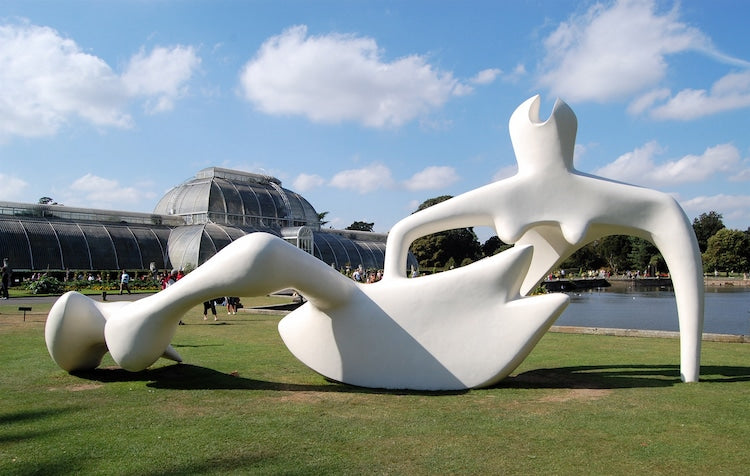Introduction:
Stone sculpture is an ancient art form that has produced some of the most iconic and enduring works in human history. These masterpieces, created by gifted sculptors, transcend time, capturing the essence of human experience, emotion, and beauty. In this blog, we will explore the lives and works of some of the most famous sculptors and their iconic stone statues, delving into the artistry and legacy that make these creations timeless.

1. Michelangelo Buonarroti: The Master of Renaissance Sculpture
David (1501-1504):
Michelangelo's David is perhaps the most renowned stone sculpture in the world. Carved from a single block of marble, this masterpiece stands at 17 feet tall and depicts the biblical hero David in a moment of poised contemplation before his battle with Goliath.
Located in the Galleria dell'Accademia in Florence, Italy, David exemplifies the Renaissance ideals of human beauty and anatomical precision. Michelangelo’s ability to render lifelike muscle and expression in stone has set a benchmark for artistic excellence.

2. Auguste Rodin: The Pioneer of Modern Sculpture
The Thinker (1902):
Originally conceived as part of Rodin’s larger work, The Gates of Hell, The Thinker has become an iconic symbol of intellectual contemplation and human introspection. This bronze and marble statue depicts a man deep in thought, his powerful muscles and expressive posture capturing the intensity of his concentration.
Rodin’s innovative approach to texture and form broke away from classical traditions, paving the way for modern sculpture. The Thinker remains one of the most recognized and reproduced sculptures globally, embodying the artist’s revolutionary spirit.

3. Gian Lorenzo Bernini: The Baroque Virtuoso
Apollo and Daphne (1622-1625):
Bernini's Apollo and Daphne is a stunning example of Baroque sculpture, renowned for its dynamic movement and emotional intensity. Carved from marble, the statue depicts the mythological moment when Daphne transforms into a laurel tree to escape the god Apollo.
Housed in the Galleria Borghese in Rome, this sculpture showcases Bernini’s unparalleled ability to convey motion and drama in stone, with intricate details like the leaves and bark seamlessly emerging from Daphne’s flesh.

4. Donatello: The Innovator of Early Renaissance Sculpture
David (1440s):
Donatello’s bronze David, created in the early Renaissance, marks a significant departure from medieval art. This statue portrays a youthful, almost androgynous David, standing in a relaxed contrapposto pose with a sense of effortless triumph over Goliath.
This David was revolutionary for its time, being one of the first freestanding nude statues since antiquity. It resides in the Bargello Museum in Florence and continues to be celebrated for its naturalism and innovative use of bronze.

5. Phidias: The Master Sculptor of Ancient Greece
Statue of Zeus at Olympia (c. 435 BCE):
Although the original statue no longer exists, Phidias’s Statue of Zeus was one of the Seven Wonders of the Ancient World. Made of ivory and gold-plated bronze, this monumental figure stood over 40 feet tall and depicted Zeus seated on his throne, exuding divine majesty.
Phidias’s work set the standard for classical Greek sculpture, influencing countless artists and shaping the aesthetic ideals of ancient Greece.

6. Henry Moore: The Modernist Sculptor
Reclining Figure (1951):
Henry Moore’s Reclining Figure series reflects his interest in organic forms and the human figure. These abstract stone sculptures, often carved from marble or bronze, depict the human body in a simplified, almost primordial state, emphasizing curves and voids.
Moore’s innovative use of negative space and his exploration of the relationship between figure and landscape have made his works iconic in the field of modern sculpture.

7. Constantin Brâncuși: The Father of Modern Sculpture
The Kiss (1907-1908):
Brâncuși’s The Kiss is a seminal work in modern sculpture, characterized by its simplicity and abstraction. Carved from limestone, the statue depicts two lovers intertwined in a tender embrace, their forms merging into a single, unified block.
This sculpture represents a departure from realistic representation, focusing instead on capturing the essence of the subject. Brâncuși’s influence on modern art is profound, as he pioneered a new approach to form and aesthetics.
Conclusion:
The art of stone sculpture has produced some of the most enduring and iconic works in human history. From Michelangelo’s masterful David to Brâncuși’s abstract The Kiss, these sculptures not only reflect the technical skill and creativity of their creators but also capture the spirit and essence of their times. As we continue to admire and study these masterpieces, we gain a deeper appreciation for the artistry and legacy of the sculptors who have shaped the course of art history.
